Recording sound with an external microphone can produce better results for your digital film than using an onboard microphone because it allows you to place your camera in one position and then record sound from a position that’s closer to your subject or character. This also helps reduce unwanted background noise.
To use an external microphone when filming, have an extra crew member hold the microphone and monitor the sound during filming. This extra crew member is called the sound operator or boom operator.
The external microphone is normally attached to a boom pole, which allows the sound operator to get the microphone closer to the subject or actor without appearing in the shot himself. Your boom operator should be able to hold the boom pole for long periods without dropping it. If the boom operator’s arm gets tired of holding the weight of the microphone and boom, the microphone could appear in the shot.
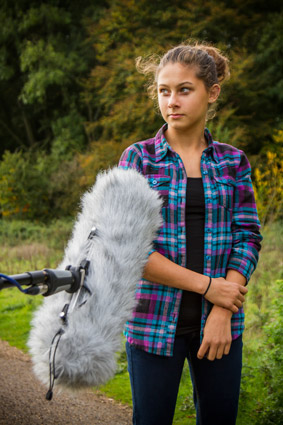
Some video cameras have a socket on the camera body — either a mini jack or an XLR socket — into which you can plug an external microphone.
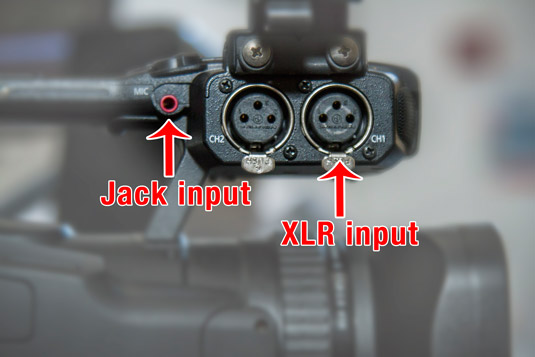
When recording with an external microphone, try using the following techniques to get the best sound:
Point the microphone in the direction of the sound: External microphones are normally directional microphones, which means they pick up sound directly in front of the microphone and not to the sides or behind it. This is good because it will record more sounds from the subject and less noise from around the subject.
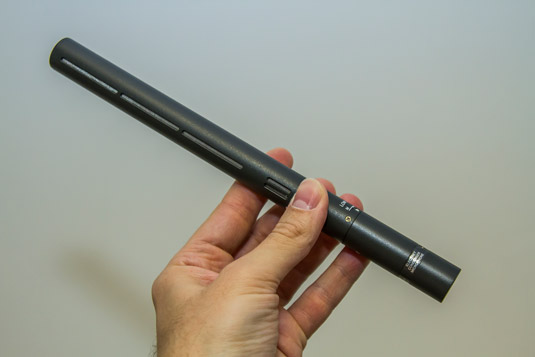 External microphones can be very useful.
External microphones can be very useful.*Point your microphone toward your subject to get the best sound.
With external microphones, it’s important to point the microphone where the sound is coming from. If the microphone is pointing away from the action, it won’t record the sound you want. The dialogue will sound quiet and muffled, and you’ll have more background noise.
Position the external microphone appropriately: When recording sound with an external microphone, you have two options. You can position the microphone above your subject or below it. The best choice of position can depend on what you are filming:
Overhead: Suspending the microphone over the scene is the most common approach. Overhead microphones are better for wider shots because they make it less likely that the microphone will appear in your shot.
Overhead shots also offer better sound from your actors and avoid noises made from your actors’ hands or feet.
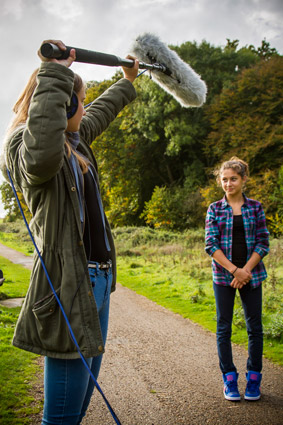 Getting audio with the overhead technique.
Getting audio with the overhead technique.Underneath: Recording sound from underneath is mainly used when filming mid shots or close‐up shots.
This option can be used if you have limited room above the actors or if you want to shield the microphone from high winds outside.
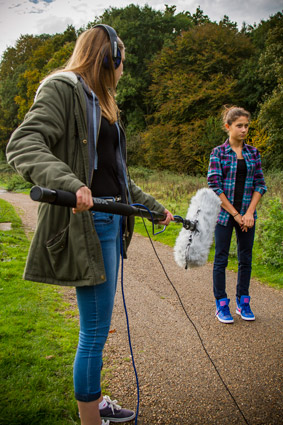 Record sound with the underneath technique.
Record sound with the underneath technique.
Ask your boom operator to keep his or her hands still when holding the boom during filming because any tapping or movement of the hands on the boom pole may be picked up by the microphone and distract from the dialogue being recorded.
Avoid dropping the boom in the shot: A boom pole with an external microphone on the end can feel heavy, especially if you have to hold it during a long scene. Sometimes the microphone can drop down into the shot, which means filming will have to be stopped. It’s important to look out for this because the boom can sometimes just creep into a shot, which you may overlook until you import your footage onto your computer later.
 No one wants a microphone in their shot.
No one wants a microphone in their shot.To help avoid the microphone appearing in your shots, ask your boom operator to rest between takes. When you’re not filming, the operator can simply put the boom pole down on the floor — the lower end of the pole, that is, not the end with the microphone, because otherwise he or she may damage the microphone.

